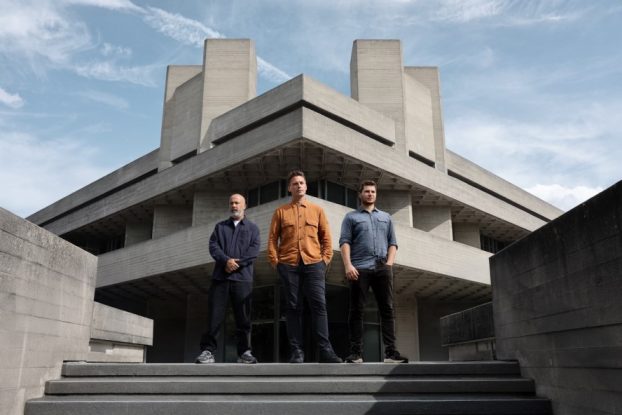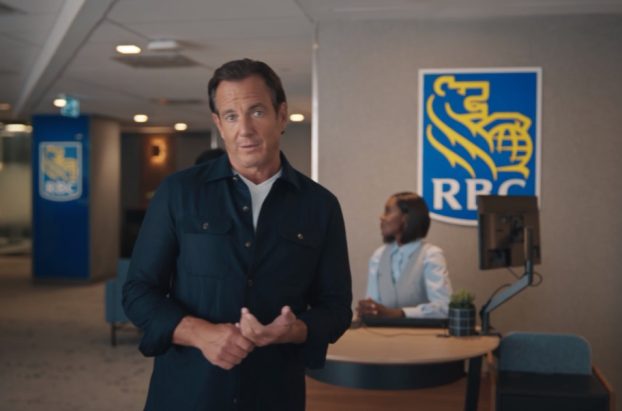
This brush set gives back to a visually-impaired community of creators in Stockholm.
This story was originally published in the 2023 fall issue of strategy magazine. Check back here as we roll out the Brands of the Year each day this week, including Pizza Pizza and Molson.
This broom and dustpan is no ordinary cleaning tool. It wasn’t picked up on Amazon. It isn’t made of materials that started out as fossil fuels and will end up as waste in a landfill. And it won’t be tucked away in a dark mudroom closet.
No, this broom and dustpan will be presented out in the open and used as a talking point when entertaining dinner guests. Its purchase will give a small collective of visually impaired craftsmen in Stockholm the chance to gain economic independence. Its hard-wearing materials, from birchwood to horsehair, will provide a lifetime of use. And it will most likely find its forever home – as it has a less than 5% return rate, compared to the 20% industry average for similar products purchased online.
But this isn’t a story about an unordinary cleaning tool. It’s about the company that supports its maker, and many others, by giving them a platform to be sold around the world. Four-year-old Montreal marketplace Goodee is a treasure trove of lifestyle products and homewares, like the brush set, that are meticulously vetted by co-founders and twin brothers Byron and Dexter Peart to ensure they reflect a concrete set of values – “good design, good people and good impact.” Everything that Goodee sells (and everything it does to promote what it sells) ladders up to those three principles.
The Peart brothers set out to create Goodee after spending an 18-year career in fashion design. They founded WANT Les Essentiels in 2007 and stepped back from the conscious clothing label in 2017 to take their eco and social intentions even further in 2019 with the launch of Goodee. During their time in fashion, the entrepreneurs spent many years abroad, encountering other creators “who were doing things that felt deeply authentic,” says Dexter. “They had this slower, more considerate version of what design could be. But their stories weren’t necessarily being told.”
Goodee launched just before coronavirus became a household name, a time when the world had no choice but to slow down. “And I think people were more receptive to hearing stories about things that matter, stories about the home, and stories about sustainability and impact,” says Dexter of the glue that holds its purpose-led mission together. “When you have a long-form conversation about a product, the [purchase] journey is quite different. We don’t want you to buy something that you’re going to take home, and then don’t want it anymore,” adds Byron.

Goodee sells an eclectic mix of homeware and lifestyle products.
Any brand can sell products with purpose. There are myriad online marketplaces that do exactly that. Some will burden buyers with information, bamboozling consumers with sustainability jargon. Goodee, however, has made efforts to simplify the education process using “codes,” with every product on the platform using simple icons to showcase its contribution to social and environmental change. Those symbols point to whether a product was made by a small business that uses recycled materials, reduces carbon, preserves a heritage craft, supports marginalized communities, and so forth.
“From the get-go, we obtain as much information as possible to provide a seal of approval. Similar to when you walk into a Whole Foods, and you know the store has done its due diligence,” says Dexter. The idea is to make it easy for consumers to understand the product’s impact while shopping online, so that “by the time it gets to them, they feel very comfortable with their purchase and they’re excited about it,” adds Byron.
The brothers have adopted what they call “slow communication.” They engage with consumers online in the same way as they would any person in real-life – with tact and restraint. “You don’t just throw everything out on the table when you meet someone on the street. You don’t tell them your whole life story,” explains Byron. “Our approach is about engaging with consumers in an honest, authentic and long-form conversation. Whether that’s on social media or on the website, it’s always about being digestible.” That means sending fewer, more curated marketing emails, posting pithy stories about its creators/products on Instagram, and doing it in a way that’s “joyful, accessible and approachable” so that the information they’re sharing isn’t too heavy or too much for consumers to process.
Everything is intentional, from the makers they pick to the places they show up.
The platform is made up of creators who have typically not had their voices heard or their designs shared, with 50% of Goodee’s brands being female-led and 45% being BIPOC-owned. And, while they don’t have a fixed location to stock their wares, Goodee has constructed a handful of pop-ups in locations where people are ready and willing to engage with the company and its message.
For example, it partnered with New York’s Whitney Museum of American Art to sell a curated collection of goods as a complement to the museum’s special exhibit Making Knowing: Craft in Art. “Someone going to the Whitney with that mindset [around art and craft] would be interested in hearing what Goodee has to say or offer,” says Byron. “Our pop-up strategy is very much around not showing up in a place and having to over-educate, but rather adding value to a conversation that’s already resonating.”

Founders Byron and Dexter Peart have a vision for a brand driven by “good design, good people and good impact.”
Goodee also showed up in Nordstrom U.S. stores earlier this year with an online and physical storefront in select locations. The pop-up – called Goodee 100 – was a curated edit of home essentials for $100 or under. “The objective was to show that sustainable products can be affordable and accessible. We wanted to break down the barriers of what people think sustainable design means,” notes Byron. And in October, Goodee found another temporary home in the heart of Los Angeles, where Dexter says 88% of its customers are based, with many of the city’s citizens following a progressive lifestyle, one that aligns with the brand’s eco and social values.
In its four short years, Goodee has earned B Corp certification, thanks to its mandate aligning with the United Nations’ Sustainable Development Goals; it raised $4.6 million in funding from investors including BDC Capital, Good & Well and Joe Mimran in its first 18 months; and it managed to maintain a compound quarterly growth rate of 50% through the pandemic, when many businesses fell victim to the retailpocalypse.
The challenge Goodee faces now is building an even larger audience for its platform, says Byron, adding that the urgency around climate change and social issues is ramping up and so its message appears to be resonating more. “It’s getting harder and harder to activate communities because there is so much content, stories and brands. To get people to spend time and pay attention to what you’re doing is not an easy task. But that’s the reason we get out of bed every day as an organization – to scale these stories so that they can touch more people.” And, of course, to convince more people to proudly present a broom and dustpan (with purpose) in their home.























